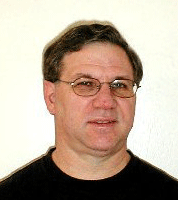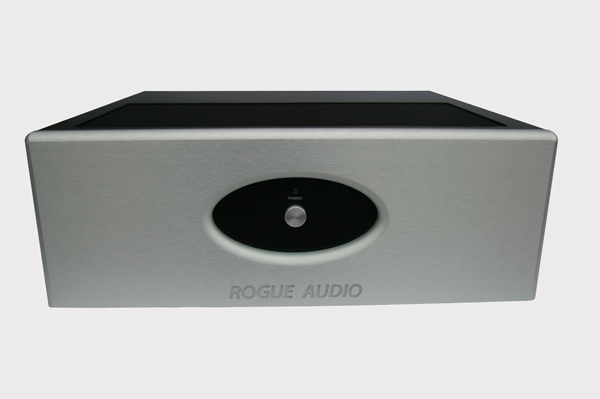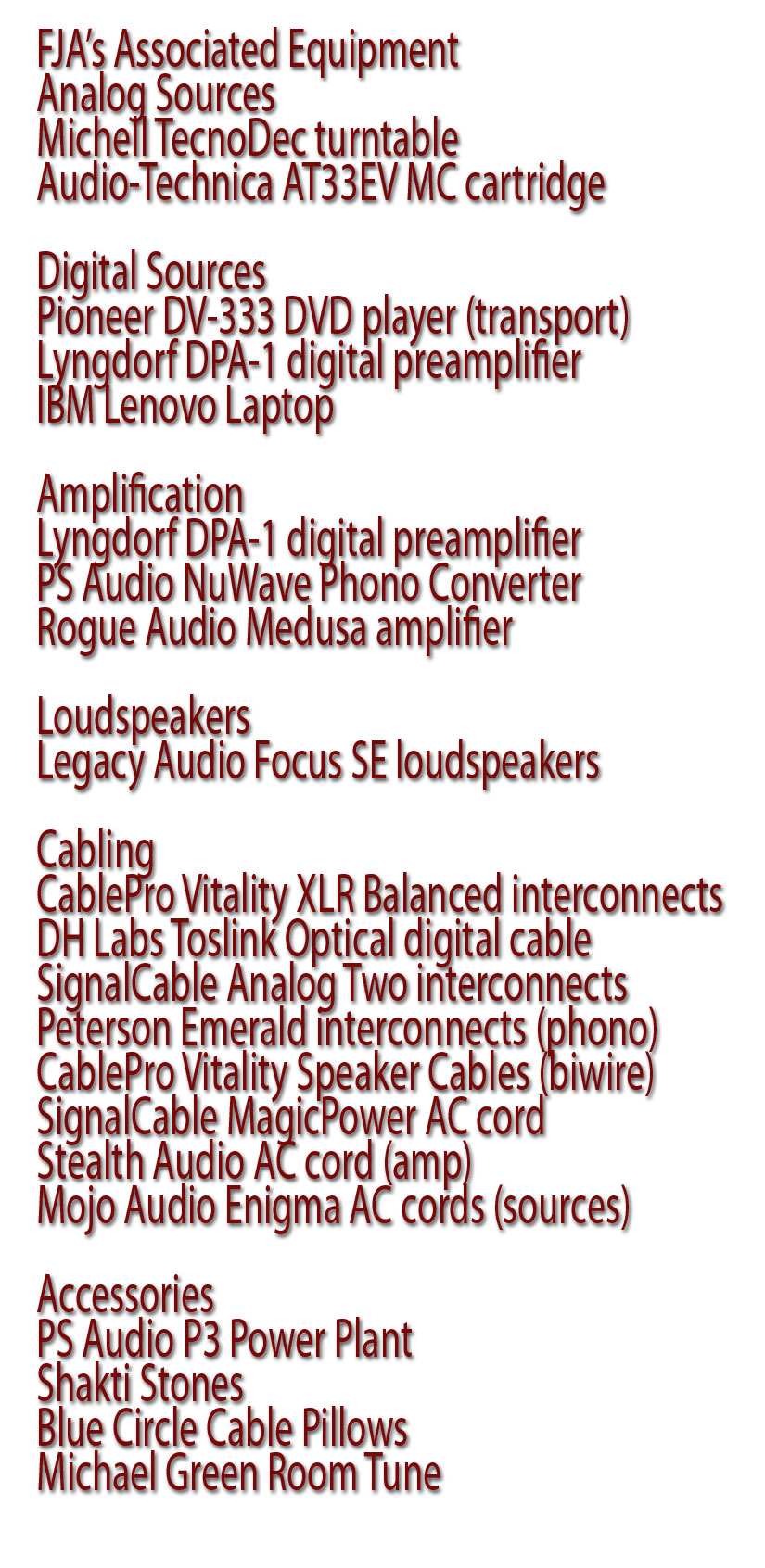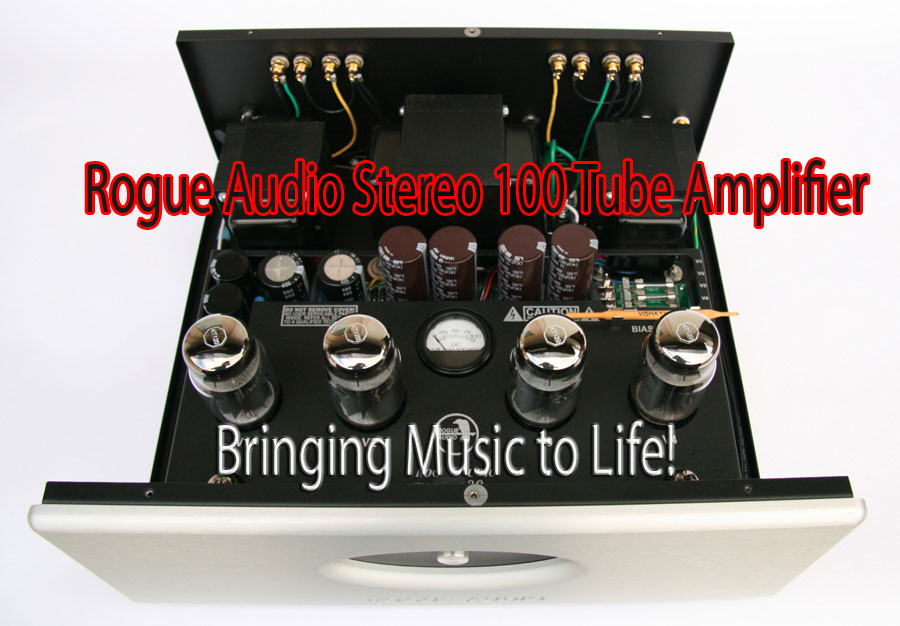Rogue Audio Stereo 100 Tube Amplifier

I was satisfied with the sonic presentation of my Rogue Audio Medusa tube hybrid amplifier but sometimes one gets the urge to try something different. In this case, I wanted to see how an all-tube amplifier would interface with my new reference loudspeakers, the Legacy Audio Focus SEs. And Rogue’s CEO Mark O’Brien had a viable alternative for me in the Rogue Stereo 100 tube amplifier.
The Stereo 100 uses two 12AX7 and two 12AU7 tubes in the input stage and was designed to use two KT120 output tubes per channel resulting in a rated output of 100 watts/channel into 8 Ohm or 4 Ohm speakers. The amplifier runs in Ultralinear mode but has a switch on the rear panel for switching to Triode operation, which some listeners prefer, while still outputting about 60 watts/channel. The switch can be operated with the amplifier fully powered up so a nearly instant comparison of the two modes can be made. With the OEM Tung-Sol KT120 output tubes, I personally did not feel that there was a big difference in sound quality so I listened mostly in the Ultralinear mode to avail myself of the amplifier’s full rated power and headroom.
I should also mention that the Stereo 100 can be biased by the user to use tubes from the 6L6GC, EL34, KT88, KT90 and KT120 tube families. There is a bias meter and a special biasing tool included on the chassis to allow individual manual biasing of each of the 4 output tubes. The procedure is quite simple as detailed in the owner’s manual and takes maybe 10 minutes total. It does require the cover to be removed, which is held in place by ten Phillips-head screws, but this is easily accomplished by anyone who understands how to operate a screw driver.

Features
In my view, the Stereo 100 has a very appealing classic look. The thick brushed aluminum faceplate has rounded edges with the ubiquitous Rogue push-button power on/off switch set into an oval countersunk panel with a blue LED indicator above the switch. “ROGUE AUDIO” is laser etched centered in the faceplate below the central panel. The case is finished with textured black heat-resistant paint and there are three grill areas around the tubes (top and both sides) that provide very good ventilation.
In addition to the individual biasing of all four output tubes and Ultralinear to Triode switching, heavy-duty gold-plated binding posts are provided for both 8 Ohm and 4 Ohm speakers. In addition, there are stereo inputs for both RCA-type connectors and XLR Balanced connections. The Balanced input is a true balanced design that employs an upscale Jensen input transformer, which has common mode noise rejection benefits that extend to the RCA inputs as well. For my purposes, the Rogue Stereo 100 amplifier contains all the features I could ask for in a basic tube power amp, including ultra-wide bandwidth output transformers and a massive, fully regulated, high-voltage power supply. And although the Stereo 100 provides a robust 100 watts per channel with the stock Tung-Sol KT120’s, Rogue’s Mark O’Brien says the tubes are not run very hard and should last in the neighborhood of 2,500 hours before needing replacement. Sweet!
Ignorance is bliss
Of course if you don’t know what you’re missing then you can be pretty happy with something that is quite good, perhaps not realizing that you could do better. After using many class-D, class AB, and tube/solid-state hybrid amplifiers in my reference system I had come to believe that an all-tube amp would not make a worthwhile improvement in the sound quality. But, oh boy, was I mistaken!
In my defense, up until recently I had more power-hungry speakers in my Large-Room Reference system that enjoyed the luxury of a little extra headroom with very powerful solid-state based amplifiers. Now that I have new reference speakers that are over 95dB/watt efficient, I realized I could get away with powering the system, even in my large room, with a tube amp of maybe 45 watts per channel or more. The Rogue 100 fills the bill nicely since it puts out more power than that even in its Triode mode of operation. So I was psyched to give it a go.
The first thing I wanted to know was how articulate and powerful the bass of the Stereo 100 would be. I had entertained the idea of bi-amping the Focus SEs using my bass-champ Medusa for the low frequencies and the Stereo 100 for the midrange and highs if I perceived that it was better in that range.
I was very surprised and pleased to learn that the Stereo 100’s bass performance was on par with that of the Medusa, and perhaps even better. No, the Stereo 100 does not have more bass power but I believe it sounds more correct—more like the drums and the bass violin and other bass instruments actually sound when heard live.
 Part of my impression stemmed from slightly less emphasis in the mid bass, which worked to allow the lower bass to have more presence. I was able to hear more of the fundamental note on double basses and bass guitars—and the reproduction was quite well controlled, not fuzzy or flabby at all. In fact, on Cassandra Wilson’s “Death Letter,” from New Moon Daughter (Blue Note D 112088) there us a deep quavering bass line that sounded much more distinct and solid than I had ever heard it before. The Rogue presents all the power, weight and bloom of bass instruments with superb authority. I assume Rogue’s decision to use KT120 output tubes has a lot to do with the amp’s excellent bass performance. “Okay then,” I said to myself, “It appears the Stereo 100 will easily drive the Focus SEs full range!”
Part of my impression stemmed from slightly less emphasis in the mid bass, which worked to allow the lower bass to have more presence. I was able to hear more of the fundamental note on double basses and bass guitars—and the reproduction was quite well controlled, not fuzzy or flabby at all. In fact, on Cassandra Wilson’s “Death Letter,” from New Moon Daughter (Blue Note D 112088) there us a deep quavering bass line that sounded much more distinct and solid than I had ever heard it before. The Rogue presents all the power, weight and bloom of bass instruments with superb authority. I assume Rogue’s decision to use KT120 output tubes has a lot to do with the amp’s excellent bass performance. “Okay then,” I said to myself, “It appears the Stereo 100 will easily drive the Focus SEs full range!”
Yes, and not only will it drive the Legacy’s full range, I found it will play them quite loud and clear as a bell with no loss of impact or dynamic range. Nice! This became evident when playing Mose Allison’s The Way of the World CD (Anti-87059-2) and I cranked it up a bit because it’s such a great sounding recording. In fact, the album is so well recorded that most of the tracks came across as if Mose and his band were performing live right in front of me.
The double bass on “Everybody Thinks You’re an Angel” presented each note spot-on with uncommon power and presence, while Allison’s vocal was clear and full. Add in the bluesy sax, dimensional slide guitar, and Mose pounding the ivories and you get a very satisfying small-club jazz band right before your ears! The Rogue Stereo 100 did its part in bringing this exceptional recording to life. As you listen to it you may also find the lyrics quite humorous as I did. You can even hear Mose laughing and quipping to the band in an off-the-cuff manner while he is playing on some of the tracks, such as Track 9, “Ask Me Nice”.
With the Rogue 100 female vocals came off very well and I believe male vocals actually improved a bit from what I recall of the Medusa’s renderings. Recordings from Jack Johnson, Hugh Laurie, Sean Hayes, Greg Brown and the aforementioned Mose Allison all hit the mark for full and natural sounding vocal presence. This is a nice treat compared to what many other amps provide.
 I dove into my vinyl for a couple of sessions too and found that the Stereo 100 sounds great on vinyl playback. The record that impressed me the most is my tried-and-true favorite, Igor Stravinsky Conducts 1961 (Columbia MS 6272). Playing through L’ Histoire Du Soldat, upon hearing the first notes from the violin on the left and the bass on the right channel I was pulled into the recording by how correct and dynamic the instruments presented. I was impressed by the transient attack of the violin and also by the sweetness of its sound. And the fundamental notes of the double bass portrayed the perfect amount of control and body. I could just about taste the horsehair on the bow and tell you what color it was, so immediate was the reproduction.
I dove into my vinyl for a couple of sessions too and found that the Stereo 100 sounds great on vinyl playback. The record that impressed me the most is my tried-and-true favorite, Igor Stravinsky Conducts 1961 (Columbia MS 6272). Playing through L’ Histoire Du Soldat, upon hearing the first notes from the violin on the left and the bass on the right channel I was pulled into the recording by how correct and dynamic the instruments presented. I was impressed by the transient attack of the violin and also by the sweetness of its sound. And the fundamental notes of the double bass portrayed the perfect amount of control and body. I could just about taste the horsehair on the bow and tell you what color it was, so immediate was the reproduction.
On The Devil’s Dance, all the instruments including the brass horns, the different stringed instruments, and of course the poignant drums and cymbal crashes all combined to put a very good semblance of a symphony orchestra in my home. Here the Stereo 100 definitely delivered. It all sounded so authentic and satisfying. Truth be told, I believe the Medusa had a touch more low bass energy, but the overall illusion was a bit more plausible and engaging when reproduced by the Stereo 100. In my book, that’s a win!
I will further offer that I had the good fortune of having PrimaLuna’s excellent Dialogue Premium HP amp on loan in the same time frame as the Rogue Stereo 100. The Dialogue Premium HP provides 70 watts per channel from the eight total EL34 tubes it comes with, and has gotten rave reviews from Stereophile and other respected publications.
In my system the Rogue Stereo 100 had a more authoritative sound and would play at a louder level without clipping especially on the 4-Ohm taps (with the 4-Ohm Focus SE’s). Aside from having more brute strength, the Rogue has considerably more powerful and more articulate bass than the PrimaLuna amp and is not as bright in the upper treble. The effect of this was that the Rogue Stereo 100 emotes sound quality that is warmer, fuller, and overall better balanced to my ears. By contrast, the PrimaLuna DP HP comes off as sounding thinner and brighter—though perhaps more airy and extended in the high frequencies.
Caveats
Boy, that’s a tough one. For what it is and all it does I have scant few complaints about the Rogue Stereo 100 amplifier.
If I were to be hyper-critical, I would say that there was a very mild hum from the large AC transformer that I could only hear when I was right up on top of the amp. I will add that the idle noise level through my very efficient speakers is very low—as low as that of Rogue’s own Medusa and many other solid-state amps I have used.
Other than that, the ultimate bass power may not be quite as bone crushing as a high-end Krell, but it’s not far from the mark and the bass that the Stereo 100 produces is very potent, dynamic, and authentic sounding.
Conclusion
While I have heard many tube products with a variety of flaws, among them noise, bloating of images, ill-focus, poor bass control and overt euphony, I can happily report that the Rogue Stereo 100 amplifier exhibits none of those issues. I firmly believe that Rogue has delivered something special in its Stereo 100 tube amplifier. With the right speakers and recordings it is capable of transporting all the various instruments and performers right into one’s listening room. I don’t believe I can pay Rogue a higher compliment.
Add to the list Rogue’s solid build quality, the ability to use a wide array of different output tubes, RCA and XLR Balanced inputs, Ultralinear to Triode switching, and individual biasing of each output tube—made easy with the built-in meter and chassis-mounted tool, and you wind up with one gorgeous, sonically impressive amplifier package. This is quite a hefty slice of bang-for-the-buck—one that will fit into my reference system perfectly. Very highly recommended!


frank alles
Manufacturer
Rogue Audio, Inc.
3 Marion, Brodheadsville, PA 18322
Phone: (570) 992-9901
Web: www.rogueaudio.com
Rogue Audio Stereo 100 Amplifier
General Features
– Ultra-wide bandwidth output transformers
– Massive fully regulated high voltage supply
– Matched quad output tubes
– Heavy-duty gold plated RCA inputs
– Heavy-duty gold plated binding posts
– User selectable 4 and 8 ohm output taps
– User selectable triode or ultralinear output
– (4) KT120, (2) 12AU7, (2) 12AX7 tube complement
– Built in bias meter
– Integral tube cage
– Machined aluminum faceplate
– Mechanically isolated transformers
– Heavy (2 ounce) copper circuit board
– All precision components
– Fully tested, burned in, and auditioned
– 3 year limited warranty (6 months on tubes)
– – – – – – – – – – – – – – – – – – – – – – – – – – – – – – – – –
Specifications
– output power: 100 WPC minimum
– input impedance: 200K Ohms
– frequency response: 5Hz – 50KHz ± 1dB
– THD: – input sensitivity: 1.0V RMS
– dimensions: 18″W x 15¾”D x 7″H
– weight: 60 lbs.
– power requirements: 115/60Hz or 230V/50Hz
– price: $3495 USD
One thought on "Rogue Audio Stereo 100 Tube Amplifier"
Leave a Reply
Stereo Times Masthead
Publisher/Founder
Clement Perry
Editor
Dave Thomas
Senior Editors
Frank Alles, Mike Girardi, Russell Lichter, Terry London, Moreno Mitchell, Paul Szabady, Bill Wells, Mike Wright, and Stephen Yan,
Current Contributors
David Abramson, Tim Barrall, Dave Allison, Ron Cook, Lewis Dardick, John Hoffman, Dan Secula, Don Shaulis, Greg Simmons, Eric Teh, Greg Voth, Richard Willie, Ed Van Winkle, Rob Dockery, Richard Doran, and Daveed Turek
Site Management Clement Perry
Ad Designer: Martin Perry






Great sounding amp ! Using triode mode as I have. Klipsch Cornwall speakers . Bass is deep and vibrant. Previous amp was mcintosh mc352 solid state what an improvement sound wise !